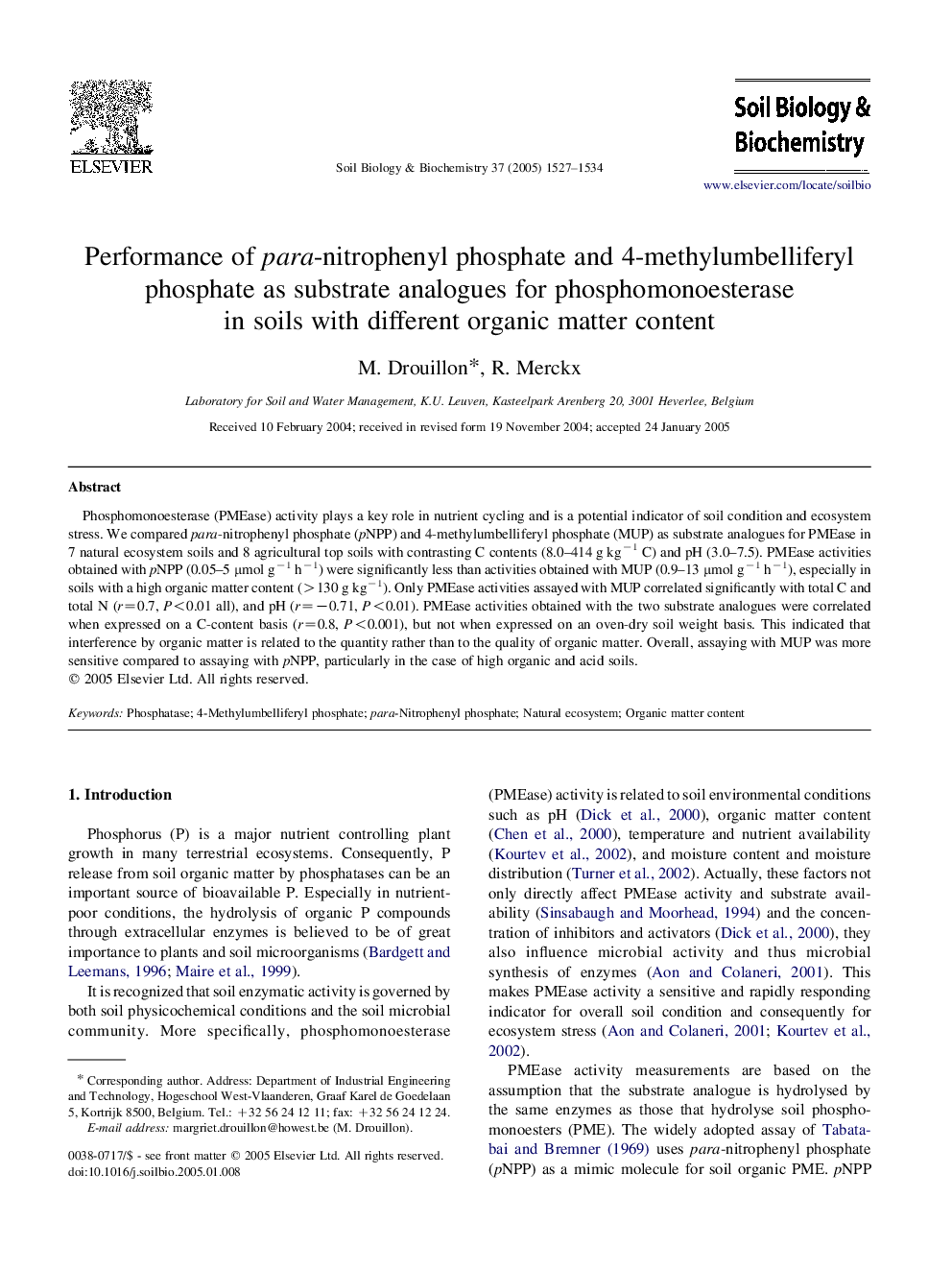| Article ID | Journal | Published Year | Pages | File Type |
|---|---|---|---|---|
| 10846238 | Soil Biology and Biochemistry | 2005 | 8 Pages |
Abstract
Phosphomonoesterase (PMEase) activity plays a key role in nutrient cycling and is a potential indicator of soil condition and ecosystem stress. We compared para-nitrophenyl phosphate (pNPP) and 4-methylumbelliferyl phosphate (MUP) as substrate analogues for PMEase in 7 natural ecosystem soils and 8 agricultural top soils with contrasting C contents (8.0-414 g kgâ1 C) and pH (3.0-7.5). PMEase activities obtained with pNPP (0.05-5 μmol gâ1 hâ1) were significantly less than activities obtained with MUP (0.9-13 μmol gâ1 hâ1), especially in soils with a high organic matter content (>130 g kgâ1). Only PMEase activities assayed with MUP correlated significantly with total C and total N (r=0.7, P<0.01 all), and pH (r=â0.71, P<0.01). PMEase activities obtained with the two substrate analogues were correlated when expressed on a C-content basis (r=0.8, P<0.001), but not when expressed on an oven-dry soil weight basis. This indicated that interference by organic matter is related to the quantity rather than to the quality of organic matter. Overall, assaying with MUP was more sensitive compared to assaying with pNPP, particularly in the case of high organic and acid soils.
Keywords
Related Topics
Life Sciences
Agricultural and Biological Sciences
Soil Science
Authors
M. Drouillon, R. Merckx,
